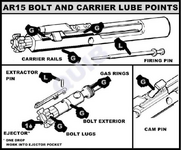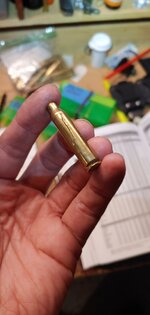Im reading that lube, oil, and even water (ie rain etc.) can cause excessive chamber pressure?
I hit pressure in my AR testing a new powder where I didnt expect to but I run my BCG "wet".
How do reloaders clean their bolts, chambers, and/or bolt carrier groups if gas guns?
I hit pressure in my AR testing a new powder where I didnt expect to but I run my BCG "wet".
How do reloaders clean their bolts, chambers, and/or bolt carrier groups if gas guns?
Understanding Pressure :: Primal Rights, Inc
Reading pressure is a required skill that all shooters must have. Whether you are shooting factory ammunition or your own handloads, you absolutely must be able to detect and interpret pressure signs on your fired brass.
www.primalrights.com














